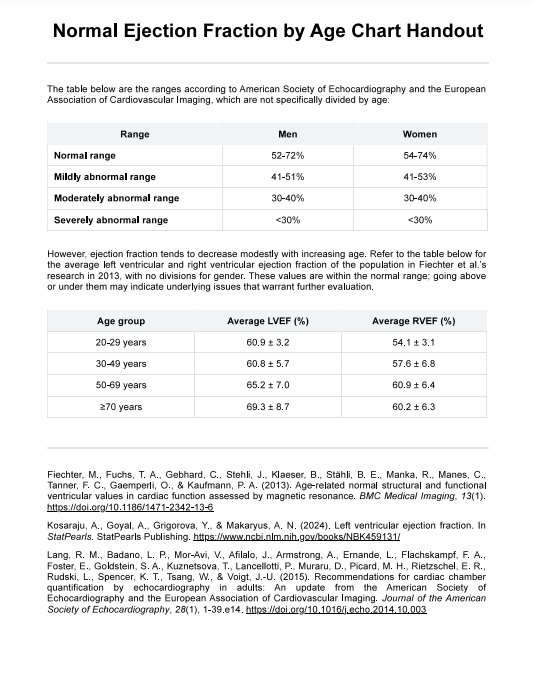A normal ejection fraction (EF) generally ranges from 52-72% for male adults and 54-74% for female adults regardless of age, though slight increases are observed in older age groups.

Normal Ejection Fraction By Age Chart
Optimize heart health with our Normal Ejection Fraction By Age Chart. Understand cardiac function based on age-specific norms. Download your PDF guide now.
Use Template
Normal Ejection Fraction By Age Chart Template
Commonly asked questions
Heart failure is typically indicated when the ejection fraction falls below 40%, with severe heart failure occurring at an EF below 30%.
Our handout and patient chart can be used during cardiac evaluations, preventive health check-ups, and assessments of individuals presenting with symptoms like shortness of breath or fatigue. They are also employed in long-term management for tracking changes in ejection fraction over time.
EHR and practice management software
Get started for free
*No credit card required
Free
$0/usd
Unlimited clients
Telehealth
1GB of storage
Client portal text
Automated billing and online payments











